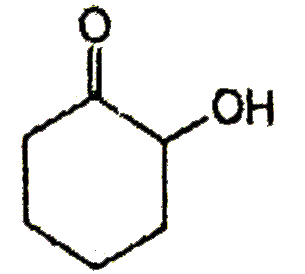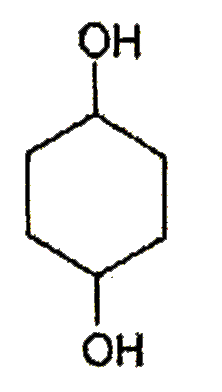Maximum enolisation takes place in
CH3COCH3
CH2COCH2CHO
CH3COCH2COCH3

The correct Answer is:D
To determine which compound undergoes maximum enolization, we need to analyze the stability of the enol forms of the given compounds. Enolization is favored when the enol form is more stable, often due to factors like resonance and aromaticity.
1. Identify the Compounds:
We have four compounds to analyze for enolization:
- Compound 1: CH3C=OCH3
- Compound 2: CH3CH2C=OCH2CHO
- Compound 3: CH3CH3C=OCH2COCH3
- Compound 4: A compound with an aromatic system.
2. Draw the Enol Forms:
- For Compound 1: The enol form is CH3C(OH)=CH2.
- For Compound 2: The enol form is OHCH=CHCHO.
- For Compound 3: The enol form can be drawn, but it does not have significant resonance.
- For Compound 4: The enol form will be aromatic, which is OHC=C with resonance.
3. Analyze Stability:
- Compound 1: The enol form is not stabilized by resonance.
- Compound 2: The enol form has some resonance but is not aromatic.
- Compound 3: The enol form lacks significant resonance stabilization.
- Compound 4: The enol form is aromatic, which greatly increases its stability due to resonance.
4. Conclusion:
The enol form of Compound 4 is the most stable due to its aromaticity and resonance stabilization. Therefore, maximum enolization occurs in Compound 4.
Final Answer:
Maximum enolization takes place in Compound 4.
We have four compounds to analyze for enolization:
- Compound 1: CH3C=OCH3
- Compound 2: CH3CH2C=OCH2CHO
- Compound 3: CH3CH3C=OCH2COCH3
- Compound 4: A compound with an aromatic system.
- For Compound 1: The enol form is CH3C(OH)=CH2.
- For Compound 2: The enol form is OHCH=CHCHO.
- For Compound 3: The enol form can be drawn, but it does not have significant resonance.
- For Compound 4: The enol form will be aromatic, which is OHC=C with resonance.
- Compound 1: The enol form is not stabilized by resonance.
- Compound 2: The enol form has some resonance but is not aromatic.
- Compound 3: The enol form lacks significant resonance stabilization.
- Compound 4: The enol form is aromatic, which greatly increases its stability due to resonance.
The enol form of Compound 4 is the most stable due to its aromaticity and resonance stabilization. Therefore, maximum enolization occurs in Compound 4.
Maximum enolization takes place in Compound 4.
Topper's Solved these Questions
- SOME BASIC PRINCIPALS OF ORGANIC CHEMISTRYBOOK - A2ZCHAPTER - SOME BASIC PRINCIPALS OF ORGANIC CHEMISTRYEXERCISE - Geometrical Isomerism
47 Videos
- SOME BASIC PRINCIPALS OF ORGANIC CHEMISTRYBOOK - A2ZCHAPTER - SOME BASIC PRINCIPALS OF ORGANIC CHEMISTRYEXERCISE - Optical Isomerism
53 Videos
- SOME BASIC PRINCIPALS OF ORGANIC CHEMISTRYBOOK - A2ZCHAPTER - SOME BASIC PRINCIPALS OF ORGANIC CHEMISTRYEXERCISE - Structure Isomerism
28 Videos
- SOME BASIC CONCEPTS OF CHEMISTRYBOOK - A2ZCHAPTER - SOME BASIC CONCEPTS OF CHEMISTRYEXERCISE - Section D - Chapter End Test
30 Videos
- STATES OF MATTERBOOK - A2ZCHAPTER - STATES OF MATTEREXERCISE - Section D - Chapter End Test
30 Videos
Similar Questions
Knowledge Check
Maximum dehydration takes place in that of
A_S01_432_O01.png) B
B_S01_432_O02.png) C
C_S01_432_O03.png) D
D_S01_432_O04.png)
Maximum dehydration takes place in that of
A B
B C
C D
D
Maximum diffraction takes place in a given slit for
Aγ-raysBultraviolet lightCinfrared lightDradio waves
